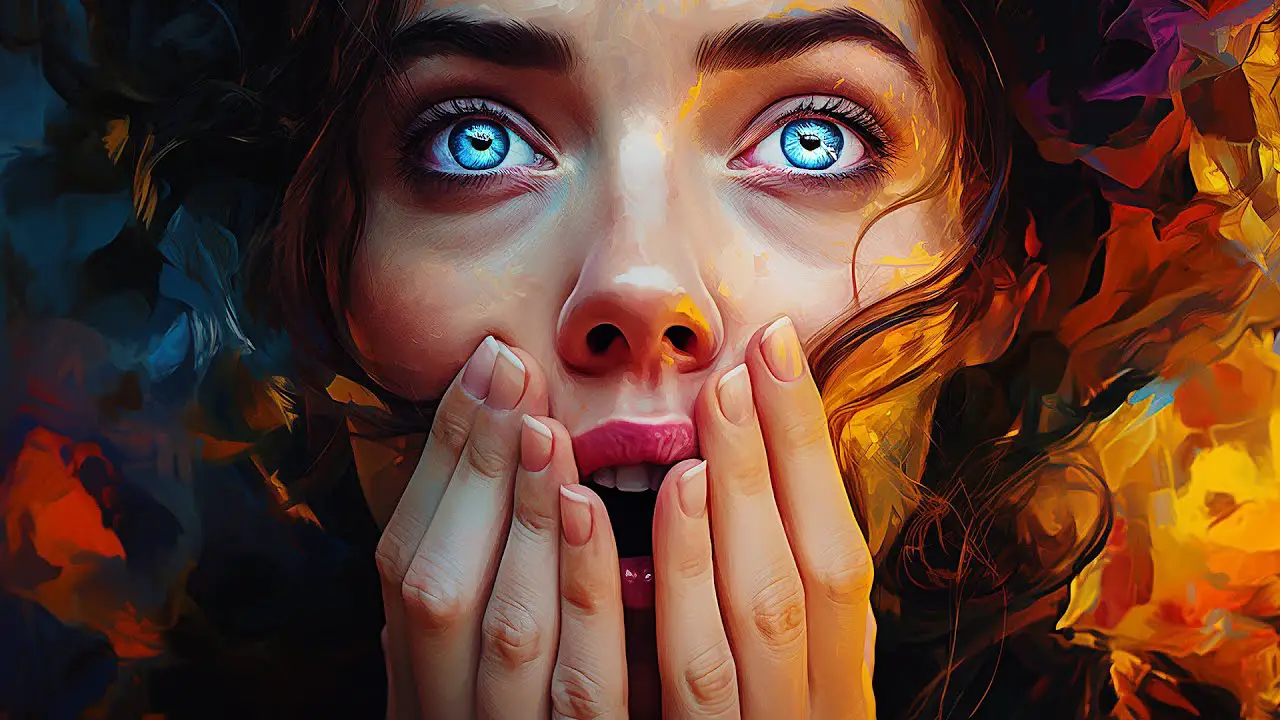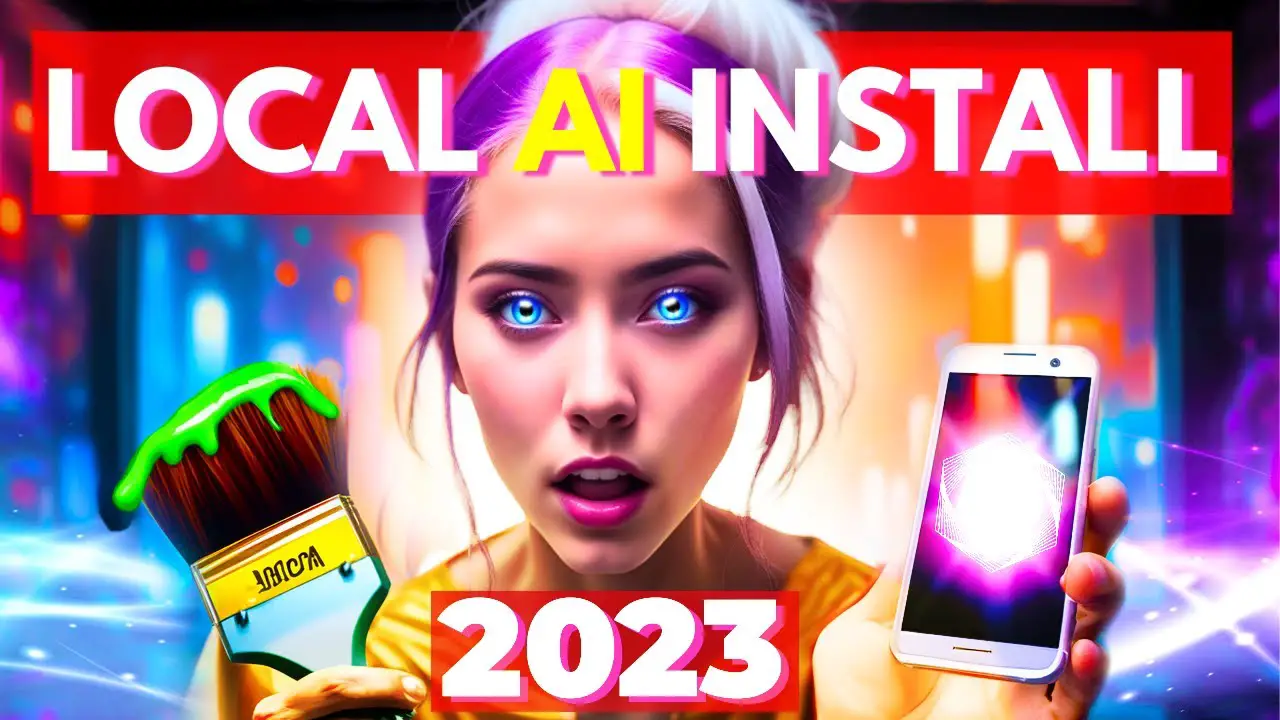Exploring Stable Diffusion in Generative Art AI Tech
July 28th, 2023
Exploring Stable Diffusion in Generative Art AI Tech
Unravelling Stable Diffusion for Generative Art AI Technology
Dive into the depths of digital innovation, where art meets technology in an exciting symphony of creativity. Welcome to the world of Generative Art AI, where Stable Diffusion reigns supreme. This groundbreaking technology is fine-tuning the way we perceive and create art, opening up a realm of possibilities that were just figments of our imagination until recently. As you navigate through this guide, prepare to unveil the magic behind Stable Diffusion and how it's setting new standards in the realm of generative art. Whether you're a tech-enthusiast, an art lover, or a curious reader, buckle up for an awe-inspiring exploration of this revolutionary AI technology!
Understanding the concept of Stable Diffusion
Commonly used in the field of AI technology, Stable Diffusion is a concept that is gradually gaining recognition. At its core, Stable Diffusion pertains to a mathematical model for systems where randomness and stability coexist. It is often regarded as an advanced computational method that was initially utilized for understanding complex phenomena in areas such as physics, finance, and engineering.
This principle forms the basis of diffusion models in machine learning, where data patterns evolve over time through random walks, moving stochastically yet following certain stable trends. In a way, it's like a flock of birds: while each bird may fly independently, they collectively move in a specific direction, creating a semblance of order among chaos.
Stable Diffusion, when applied to AI, thus enables a system to learn from random distributions of data while maintaining a stable trend, making it ideal for applications requiring reliable results in situations with high uncertainty. It's akin to teaching an AI how to paint: you feed in various styles and techniques (randomness), but guide it towards creating a beautiful landscape (stability). Overall, the concept of Stable Diffusion forms a critical bridge between randomness and order, chaos and structure, in the realm of AI technology.
Role of Stable Diffusion in Generative Art
Influence on aesthetic appeal
When it comes to the world of art, 'aesthetic appeal' is a term often used to describe an artwork’s visual attractiveness and its ability to stimulate our senses. In this context, Stable Diffusion's influence proves to be transformative.
This innovative AI technology has the exceptional capability to analyze data patterns, learn from them, and generate new, unique pieces of art. The generated artwork not only embodies complexity and detail but also carries an intrinsic aesthetic appeal that mirrors human-created art.
For instance, consider a scenario where Stable Diffusion is fed data of various landscape paintings. It learns from the different elements such as color patterns, brush strokes, and scenery details. Then, it uses this knowledge to create a completely new painting. This newly formed piece of art will showcase an amalgamation of aesthetics derived from the original dataset, yet present a new interpretation entirely unique to itself.
The influence Stable Diffusion holds over the aesthetic appeal of generative art is profound. It allows the technology to push beyond the traditional boundaries of creativity and craft artwork that maintains a harmonious balance between novelty and familiarity. The resultant artwork resonates with viewers because although it appears fresh and intriguing, it also echoes the aesthetics of more conventional forms of art.
By leveraging Stable Diffusion, we can automate the creation of visually compelling pieces that still retain the essence of human touch in their aesthetics. Its incorporation is gradually shifting the paradigm of generative art, paving the way for a future where AI and human creativity coexist in harmony, each enhancing the aesthetic appeal of the other.
Boosting creativity through automation
In the realm of generative art, the interplay between creativity and automation has opened new avenues for artistic expressions. Stable Diffusion, an AI technology, is at the forefront of this revolution, significantly enhancing creative possibilities.
Automation, often viewed as a mechanical process devoid of any creative spark, undergoes a transformative change in this context. Instead of stifling creativity, it becomes a powerful tool that artists can wield to expand their creative horizons. By taking care of repetitive tasks and complex calculations, automation frees artists' minds to focus on the innovative aspects of their work.
For instance, consider an artist working on a generative art piece that involves intricate geometric patterns. Manually plotting each point and line can be tedious and time-consuming. However, with automated systems powered by Stable Diffusion, the artist can define basic rules and parameters. The AI then uses these guidelines to generate the complex patterns, saving the artist from monotonous tasks and allowing them to devote more time to conceptualizing and designing unique elements.
Moreover, Stable Diffusion can also introduce an element of randomness and unpredictability into the artwork. This may seem counterintuitive - after all, isn't creativity about deliberate, conscious decisions? However, some artists thrive under these conditions, drawing inspiration from the surprising results generated by the AI. Such a blend of planned design and spontaneous creation can lead to truly unique pieces of art that push the boundaries of traditional techniques.
As we delve deeper into the age of digital art, the synergy between creativity and automation, empowered by technologies like Stable Diffusion, will continue to redefine what we perceive as art. Far from undermining human creativity, these tools are set to augment and amplify it, ushering in an exciting era of artistic innovation.
How Stable Diffusion works as an AI technique
Stable Diffusion, an advanced AI technique, is rapidly becoming a game changer in the field of Generative Art. This technique has a unique set of workings that distinguish it from other AI technologies. To fully grasp its mechanics, it’s essential to first understand what diffusion is. In scientific terms, diffusion is the process by which particles spread out from an area of high concentration to an area of low concentration, guided by random motion. Stable Diffusion models capture this essence but in the digital realm, transforming the way generative art can be created.
At its core, Stable Diffusion as an AI technique leverages a probabilistic model. This model uses random sampling and statistical analysis to generate new, original pieces of art. Each artwork is essentially a sample drawn from a complex, high-dimensional distribution that has been 'trained' on a dataset of existing artworks. The process begins with a simple noise input, which gradually evolves into a coherent image through series of iterations guided by the trained model. Over time, the model learns to create content that is both unique and artistically compelling.
One aspect that makes Stable Diffusion stand out is its "reversibility". Unlike traditional feed-forward neural networks, Stable Diffusion models are reversible, meaning they can reconstruct the original input from the generated output. This allows for more control over the generated content and provides a clear path back to the initial state if needed.
As an example, consider a Stable Diffusion model trained on a dataset of landscape paintings. Given a basic noise input, the model can gradually morph this noise into a beautiful landscape painting, with each step adding more detail and refining the aesthetics. And because of the reversibility, it is possible to trace back the steps taken in creating the art piece, offering fascinating insights into the creative process of the AI.
In summary, Stable Diffusion works by combining elements of diffusion, statistical modeling, and reversibility, creating a powerful tool for generative art. Understanding these core features is key to appreciating the true potential of this innovative AI technique.
Comparing Stable Diffusion with other generative art AI technologies
When exploring the panorama of generative art AI technologies, it becomes essential to place Stable Diffusion in a comparative light with its contemporaries. This serves to highlight unique aspects and distinctive features that differentiate this technology from the rest.
Generative Adversarial Networks (GANs), for instance, have been quite popular in the field of generative art. GANs work by pitting two neural networks against each other - one generating content (the generator) and the other evaluating the generated output (the discriminator). However, compared to Stable Diffusion, GANs can often suffer from issues of mode collapse, where the generator creates limited varieties of outputs. Stable Diffusion, on the other hand, demonstrates robustness against such collapses, ensuring diverse and high-quality generation.
Variational AutoEncoders (VAEs) are another technology utilized for generative art. These models explicitly learn a latent space representation and can generate new samples. Nonetheless, VAEs might produce blurred results due to their loss function. In contrast, Stable Diffusion excels at generating clear and detailed artwork, making it advantageous for creating intricate designs.
Then there's DeepArt, an algorithm that creates artistic images by combining the content of one image with the style of another, much like the concept of style transfer. As fascinating as DeepArt is, it mainly focuses on transferring existing styles rather than generating novel ones. Stable Diffusion, meanwhile, is capable of producing unique and original art forms, amplifying its potential for creativity and novelty.
Through these comparisons, it becomes apparent how Stable Diffusion positions itself uniquely in the realm of generative art AI technologies. It not only shows promise in overcoming common challenges faced by other models but also offers distinctive benefits that enhance the quality and diversity of generated art.
Future prospects of Stable Diffusion in Generative Art
As we continue to witness technological advancements, the future prospects of Stable Diffusion in the realm of generative art appear quite promising. Hailed as an avant-garde AI technology, Stable Diffusion is poised to redefine and reshape the artistic landscape by offering novel creative avenues.
Generative art, as a form that uses algorithmic or stochastic processes, has always been considered a modernist marvel. The introduction of Stable Diffusion amplifies its potential, laying the groundwork for more complex, aesthetically pleasing compositions. This AI technology could be seen as an artistic tool for the future, allowing creatives to experiment with evolving patterns, textures, and design elements, thereby expanding their artistic horizons.
Interestingly, the Stable Diffusion process takes inspiration from natural phenomena, mimicking the unpredictability and randomness inherent in nature's creations. As such, it can generate art pieces that are not just visually appealing but also possess an organic feel, adding a new dimension to the perception and appreciation of art.
Furthermore, the predictive capabilities of Stable Diffusion could pave the way for real-time generative art installations. Imagine walking into an art exhibition where the artwork evolves right in front of your eyes, responding to variables like ambient temperature, sound, or crowd movement. Such immersive experiences could revolutionize how we interact with art, making it more dynamic and engaging.
In conclusion, while we're still in the nascent stages of Stable Diffusion's application in generative art, its potential is palpable. The coming years are likely to witness an explosion of innovative artistic expressions, powered by this groundbreaking technology.
Stable Diffusion's transformative impact on generative art cannot be overlooked. As we've explored, it not only influences the aesthetic appeal of the artworks but also boosts creativity through automation. Its distinct working mechanism sets it apart from other AI technologies in generative art, establishing its unique place in this field. The future prospects of Stable Diffusion in creative art are indeed intriguing, with potential for significant advancements and innovations. Harnessing the power of this revolutionary technology could open up new vistas in the realm of AI-enabled art. A better understanding of Stable Diffusion can certainly enrich both our appreciation of generative art and our knowledge of AI's expansive capabilities. As we move forward into an era where technology and art continue to converge in unprecedented ways, Stable Diffusion stands poised as a powerful tool to shape the future narrative of generative art.
Other articles
October 28th, 2023
Exploring the Structure and Functionality of GPT and LLAMA
age models - Generative Pre-training Transformer (GPT) and LAnguage Model Analysis (LLAMA). Understand their functionality, operation and role in natural language understanding tasks. read more...
August 4th, 2023
Secret Project from Stability AI. Stable Swarm Install Guide.
er experience for Stable Diffusion. source read more...
October 29th, 2023
Step-by-step Guide for Installing and Running GPT4All
ocally on consumer grade CPUs. read more...




